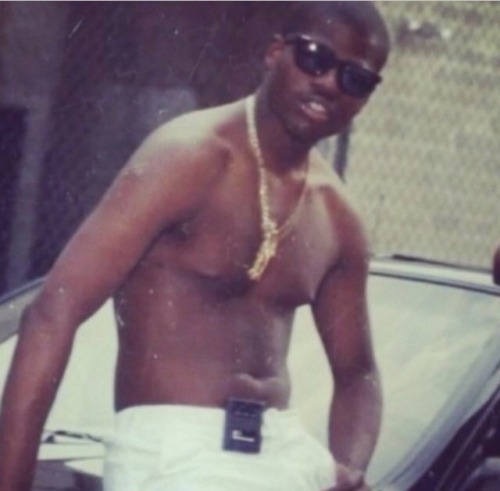by Ran

Miguel Angel Felix Gallardo was born on January 8, 1946 in Mexico.
Like his future business partners, Rafael Caro Quintero and Ernesto Fonseco, Gallardo moved to Culiacan, the capital of Mexico's Sinaloa state, from rural Mexico. All three initially resided in the impoverished Tierra Blanca section of the city. Gallardo began his business career selling sausages and chicken from a bicycle. He later became a police officer and later a bodyguard until ultimately entering the drug trade.
While the majority of drug shipments from Colombia to the U.S. in the 1970s entered the country through Florida, Colombian cartels also established routes through Mexico. Medellin Cartel leader Benjamin "Black Pope" Herrera Zuleta, father of Cali Cartel leader Helmer "Pacho" Herrera Buitrago, forged a business relationship with Mexican drug trafficker Alberto Sicilia Falcon after the two were introduced by Cuban-born drug kingpin Juan Matta-Ballesteros. Shortly after Sicilia Falcon's arrest, Gallardo filled his position as point-man for the Mexican end of the transportation network.
Gallardo's influence spread to legitimate business as well. He held a seat on the Board of Directors of the Mexican state-owned investment bank SOMEX and invested in the Mexican resort city of Puerto Vallarta.
According to eyewitnesses, DEA agent Enrique S. Camarena was kidnapped in Guadalajara by four men while heading to meet his wife for lunch on February 7, 1985. The bodies of Camarena and his pilot Alfredo Zavala were discovered that March near a ranch in Michocoan. In mid-March, 13 former and then-current law enforcement personnel, six of whom were members of the Jalisco state judicial police, were arrested in connection to the killing. One, Gabriel Gonzalez Gonzalez, died from acute hemorrhaging of the pancreas while in custody. Gonzalez was a former Guadalajara metropolitan section commander assigned to the homicide division. While Gallardo was widely suspected of ordering Camarena's death, fellow Guadalajara cartel founders Rafael Caro Quintero and Ernesto "Don Neto" Fonseco Carrillo were charged in connection to the murder. The murders of Camarena and Zavala were widely believed to be retribution for the shutdown of some of the cartel's marijuana plantations that resulted from the former's undercover investigation.
In 1986, Gallardo reportedly attended a quinceanera in Culiacan, the capital of Mexico's Sinaloa state, accompanied by a caravan of 12 green vans, each filled with at least four armed men. The city's governor, Antonio Toledo Corro, who died July 6, 2018 at the age of 99, was alleged by U.S. sources to be actively protecting drug traffickers in the region. U.S. officials also alleged that Gallardo had spent time as a guest at Toledo Corro's ranch, though the latter denied having ever met the former. However, it was reported that Gallardo's nephew, Antonio Toledo Felix, happened to be Toledo Corro's illegitimate son with Gallardo's sister.
 |
| Photo via Proceso |
Sinaloa was plagued by violence in 1986. There were 1,400 killings in the state that year.
Following a three-month criminal investigation, Gallardo was arrested at his home in Guadalajara on April 8, 1989. However, Mexico Attorney General Enrique Alvarez del Castillo believed that Gallardo disapproved of murdering Camarena. Approximately 80 local police officers were arrested as well, though most were released after being questioned. The suspects included Arturo Moreno, director of the Sinaloa State Judicial Police, and Robespierre Lizarraga Coronel, chief of the Culiacan municipal police.
Undeterred by his incarceration, Gallardo continued to lead the cartel from prison, giving orders via mobile phone. In 1991, however, he was transferred to the then newly-constructed Altiplano maximum-security prison (Mexico's first) located in the Mexican town of Almoloya de Juarez. Following Gallardo's transfer, the Guadalajara Cartel was divided into smaller organizations -- the Sinaloa Cartel, run by his former lieutenants, Hector Palma Salazar and Joaquin "El Chapo" Guzman Loera; the Juarez cartel, led by Amado Carrillo Fuentes; and the Tijuana Cartel, headed by Gallardo's nephews, the Arellano-Felix brothers.
On August 23, 1994, Gallardo's kidnapping charge was vacated by the First Unitary Criminal Court of Guadalajara.
However, he was sentenced to 40 years in prison for homicide, cocaine possession, bribery and carrying a weapon. Quintero was convicted for the same crimes and received the same sentence.
In 2013, Rafael Caro Quintero's conviction was overturned and he was released from prison. However, he is still being pursued by U.S. authorities, who have offered a $5 million reward for information leading to his capture. In 2016, a judge ordered that Ernesto Fonseca Carrillo be allowed to complete his sentence under house arrest due to his deteriorating medical condition. That same year, Gallardo requested that Jalisco's Fourth District Court in Federal Criminal Proceedings allow him to be transferred to home detention as well, citing failing health, specifically, hearing loss, a hernia, cataracts in one eye, the loss of the other eye, and a ministroke. Though Gallardo's request for home confinement was denied the following year, he was granted a transfer to a medium-security prison in Guadalajara, Jalisco.
On August 23, 2017, following a retrial ordered in the early 2000s, a Mexican federal judge handed Gallardo a 37-year prison sentence for the murders of Camarena and Zavala. Gallardo was also ordered to pay $1.18 million in damages.
At its peak, the Guadalajara Cartel is estimated to have shipped upwards of four tons of cocaine to the U.S. monthly.
Related:

















